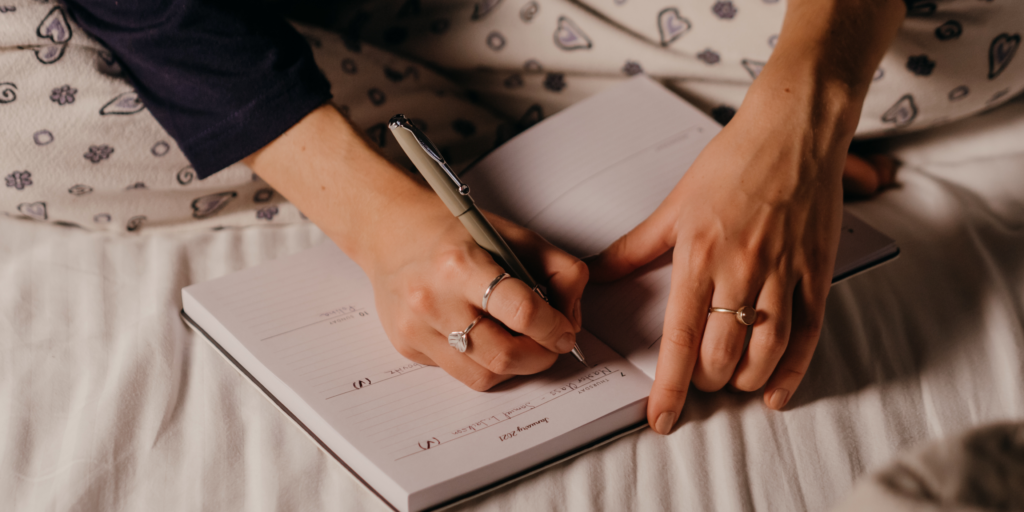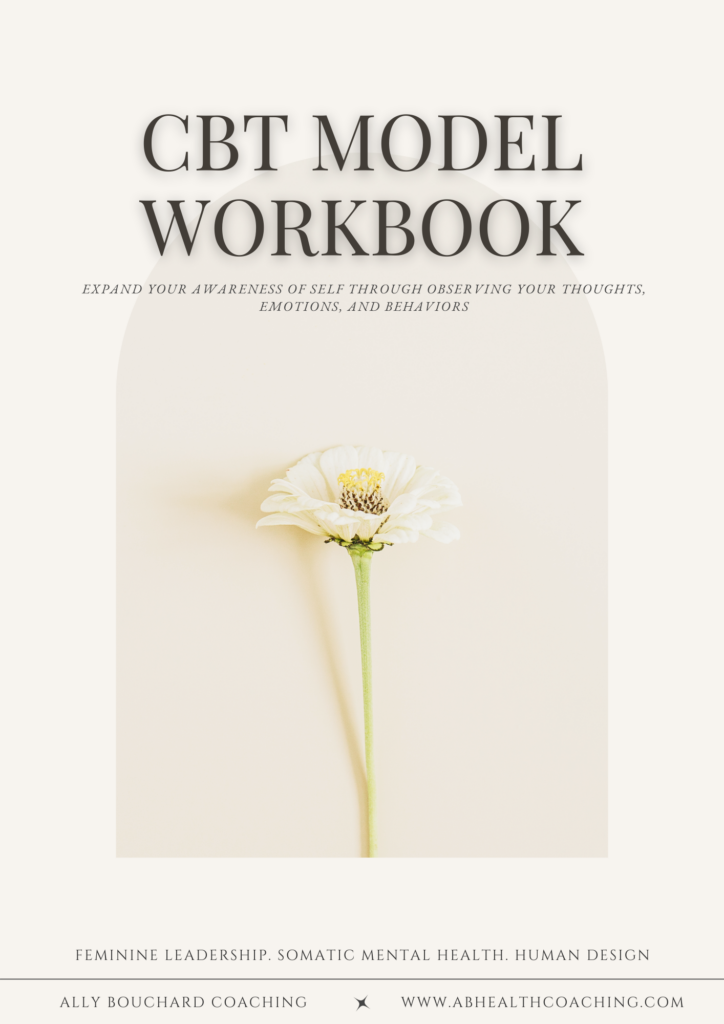Understanding how your thoughts, emotions and actions (behaviors) influence and work with one another is a key component to your mental, emotional, physical, and spiritual health. This article will educate you on that relationship through the use of the Cognitive Behavioral Therapy (CBT) Model and show you how to use it to feel empowered on your healing and embodiment journey.
Understanding the Cognitive Behavioral Therapy (CBT) Model
Cognitive Behavioral Therapy (CBT) is traditional talk therapy that focuses on the relationship between your thoughts, emotions, and behaviors to better manage your mental health. By the name itself, it’s very “cognitive” and focuses heavily on your thoughts and the mind. I work somatically with my clients because while CBT is extremely effective, it leaves out one key component: physiology & nervous system regulation. (My model effectively looks like this: Thoughts, Emotions, *Somatic exercises & Nervous System Regulation*, Behaviors). However, using the CBT model offers an awareness to understanding an important key component of any healing journey: getting to know yourself.
The CBT model is broken into three categories of focus that work off of one another: our thoughts, our emotions, and our behaviors.
Thoughts
- Your perspective on any given situation – even your own behaviors and emotions
- Ways you speak to yourself
- Opinons
- Belief systems (personally claimed or given to you)
Emotions
- Feelings and sensations happening in your body pertaining to outside circumstance or your own thoughts and behaviors
- Sad, Joyful, Scared
- Tingly, Calm, Stiff
- Energy that lives and moves in your body to alert you to respond or react
Behaviors
- The actions you take and how you choose to react to outside circumstance, or your thoughts and emotions
- Choosing to slam doors when angry or take a deep breath
- Choosing to walk away or engage with a situation
Many of us are operating in autopilot leaving us unaware of why we do, feel, and think the things we do effectively keeping us victims to our conditioning. Instead, we could be moving through life consciously creating what we desire. By bringing awareness and reflection to your own thoughts, feelings, and behaviors you now have a choice in how you move forward.
How Our Thoughts, Emotions, and Behaviors Influence One Another
Whether you realize it or not, your behaviors are always driven by an emotional response. Advertisers of all kinds know this. They focus on emotional messaging to get you to buy their product or take action towards their cause. This doesn’t make them “sleazy”, but to be a conscious consumer you just need to be aware of your emotional and behavioral response.
Additionally, our thoughts can influence how we feel. In effect, our thoughts contain our belief systems. When our belief systems (thoughts) activate a certain emotion, that emotion can then activate certain behaviors within us.
Let’s work with an example:
Situation
My boss’s feedback of my work is asking for some improvements
Thought(s)
- “I didn’t do enough”
- “I’m not a good employee”
- “This will reflect poorly on my review”
Belief Systems:
Perfectionism
Achievement = Self-worth
Emotion(s)
Sadness, Anxiety, Defeat, Worthless
Behaviors
Paralysis
More worrying thoughts
Over-apologizing for mistakes
Everything that is happening in this example is happening subconsciously for many of us. By simply starting to witness your thoughts, emotions, and behaviors through regular observation you can take that step towards change. Change towards how you feel, what you think, and actions you take. Changing these areas will ultimately change the outcomes of your life.
Understanding Yourself Through Observation

To create more consciousness around your own thoughts, emotions, and behaviors influencing the outcomes of your life you have to be willing to observe them.
How to start observing
First, download this workbook to help guide you through the process.
Second, Ask yourself these questions:
- What am I thinking?
- What am I feeling?
- What am I doing?
- Are these thoughts helpful?
- Are these behaviors aligned with my values and how I want to be showing up as my best self?
Third, take note: When observing yourself, focus on getting curious instead of getting judgmental. It’s easy for us to stay in the cycle of negative thinking when first observing ourselves in this way. Don’t worry, this is normal. Stay focused on being curious. Release self-judgement and encourage self-compassion. Witnessing yourself in this way is a new skill, and when we learn new skills there are bound to be mistakes, frustrations, and adjustments that arise.
If you are looking for more support, consider a Discovery Call. It’s completely FREE and we can work on mastering these observational skills to help get your closer to the woman you are meant to be

